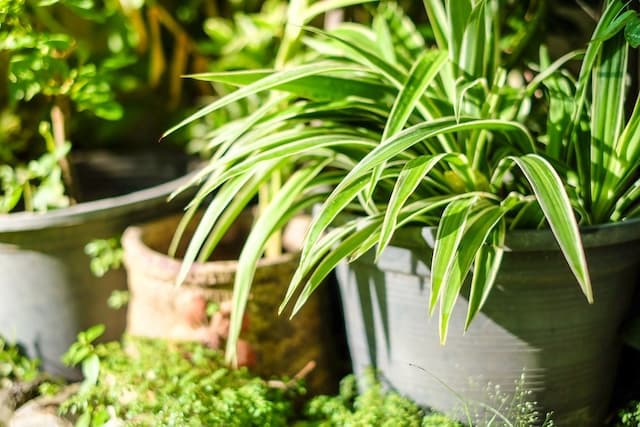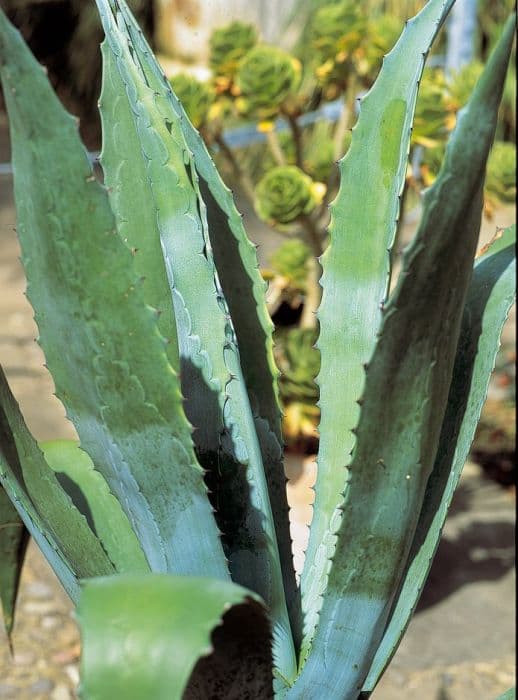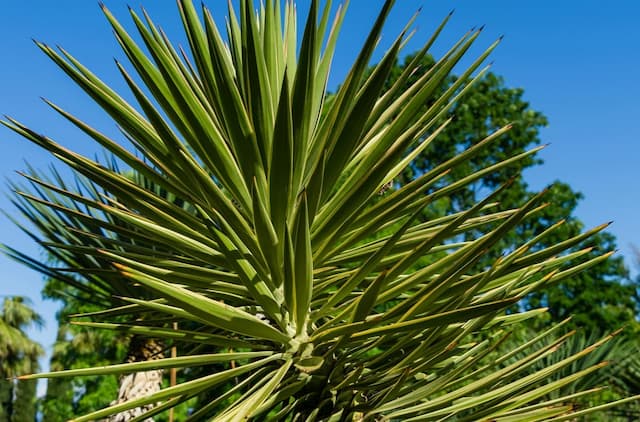Elephant's-foot Beaucarnea recurvata



ABOUT
Elephant's-foot is an evergreen woody perennial that reaches a height of about 16 feet.
Its characteristic feature is its trunk: it has an expanded caudex (expansion at the base of the trunk) for water storage. The caudex reaches up to 1.5 feet in diameter.
The leaves are thin, long, and brittle. Sometimes curled at the end.
The bark is smooth, and the trunk is practically unbranched.
After 10 years of age, panicles of white flowers may appear.
Grows great as a houseplant in a pot. Can even be small and fit on a windowsill.
About this plant
 Names
NamesFamily
Asparagaceae
Synonyms
Ponytail palm, Bottle palm, Elephant foot tree
Common names
Beaucarnea inermis, Beaucarnea tuberculata, Dasylirion inerme, Dasylirion inermis, Dasylirion recurvatum, Nolina recurvata, Pincenectitia tuberculata
 Toxicity
ToxicityTo humans
Beaucarnea recurvata is considered toxic if ingested by animals. The plant contains saponins, which are a type of glycoside that can cause gastrointestinal distress if consumed in large quantities.
Symptoms of poisoning may include vomiting, diarrhea, and abdominal pain.To pets
While Beaucarnea recurvata is not known to be highly toxic, it does contain saponins and other compounds that can cause mild gastrointestinal discomfort if ingested in large quantities. Therefore, it is important to keep the plant away from children and pets who may be tempted to chew on the leaves or stems.
Symptoms of poisoning may include vomiting, diarrhea, and abdominal pain.
 Characteristics
CharacteristicsLife cycle
Perennials
Foliage type
Evergreen
Color of leaves
Green
Flower color
White
Height
16 feet
Spread
1,5 feet
Plant type
Tree
Hardiness zones
9
Native area
Mexico
Benefits
 General Benefits
General BenefitsElephant's-foot is pet and child friendly;
The shape of the trunk is maded to hold water. Therefore, you can not worry about watering this plant. It can go up to three weeks without watering;
This plant can do well in low or indirect light; It can also survive up to three weeks without watering. Air-purifying Qualities
Air-purifying QualitiesIt breaks down toxic gases, thereby making the air cleaner.
 Other Uses
Other UsesThe species is listed in Appendix II of the Convention on International Trade in Endangered Species (CITES).
Interesting Facts
 Feng Shui
Feng ShuiThis is one of the best options for a home that is thought to bring a lot of positive energy to your space.
 Zodiac Sign Compitability
Zodiac Sign CompitabilityTAURUS
Elephant's-foot speaks good to Taurus. It brings them good luck, reduces stress and sets them up for work. Plant Symbolism
Plant SymbolismElephant's-foot symbolizes strength and equanimity.
The name 'Beaucarnea' is a combination of the words beau - beautiful and carneia - an ancient Greek harvest festival celebrated under different names throughout Europe. It indicates the primordial power of the plant, which almost always manages to recover.
 Water
WaterFor potted houseplants, water Elephant's-foot every 7-14 days during the growing season (spring - summer). The trunk of the plant stores water, so be careful not to overwater it.
During the winter, reduce watering to once a month. Light
LightElephant's-foot likes full sun or bright indirect light.
If the plant is grown indoors, place it in the brightest place you can find - a window with direct sun or lots of indirect light.
But it also can survive partial shade. Temperature
TemperatureIt prefers a temperature above 60 °F. But can also survive short drops in temperature down to 50 °F.
 Pruning
PruningDamaged leaves should be trimmed back to healthy tissue. If shoots produce secondary shoots, they can be cut back to maintain the classic appearence of the tree. However, you can leave these shoots, if you like. This will not do any harm to your plant.
 Cleaning
CleaningAs needed
 Soil
SoilTo grow indoors, plant Elephant's-foot in a small container filled with cactus and succulent growing mix mixed with a little peat.
 Repotting
RepottingThe frequency of transplanting depends on your desire. If you want a large plant, transplant Elephant Foot every year into a larger container.
If you want a small plant, transplant every 2-3 years.
Replanting should take place in the spring. Humidity & Misting
Humidity & MistingThe ideal humidity level is 40%.
Considering that usually the humidity level in the rooms is 30-50%, it does not need additional sources of humidification. Suitable locations
Suitable locationsIndoor
All year round
Outdoor
Can be outdoors if the temperature is above 50 °F. If the temperature is lower, remove the plant to a warm room.
Hardiness zone
10 - 12 USDA
 Life cycle
Life cycleIndoors the plant grows slowly.
It blooms after only 10 years, but it grows very rarely indoors and most likely does not bloom at all. Propogation
PropogationPropogation time
Spring
It is propagated by offsets. They are separated from the trunk and placed in the soil. Since the chance of rooting is slim, it is advisable to use rooting hormone. This way, the chance of rooting is greatly increased.
 Pests
PestsSpider mite, Diaspididae, Scale insects, Mealybug
 Diseases
DiseasesStem rot, Bacterial leaf streak









